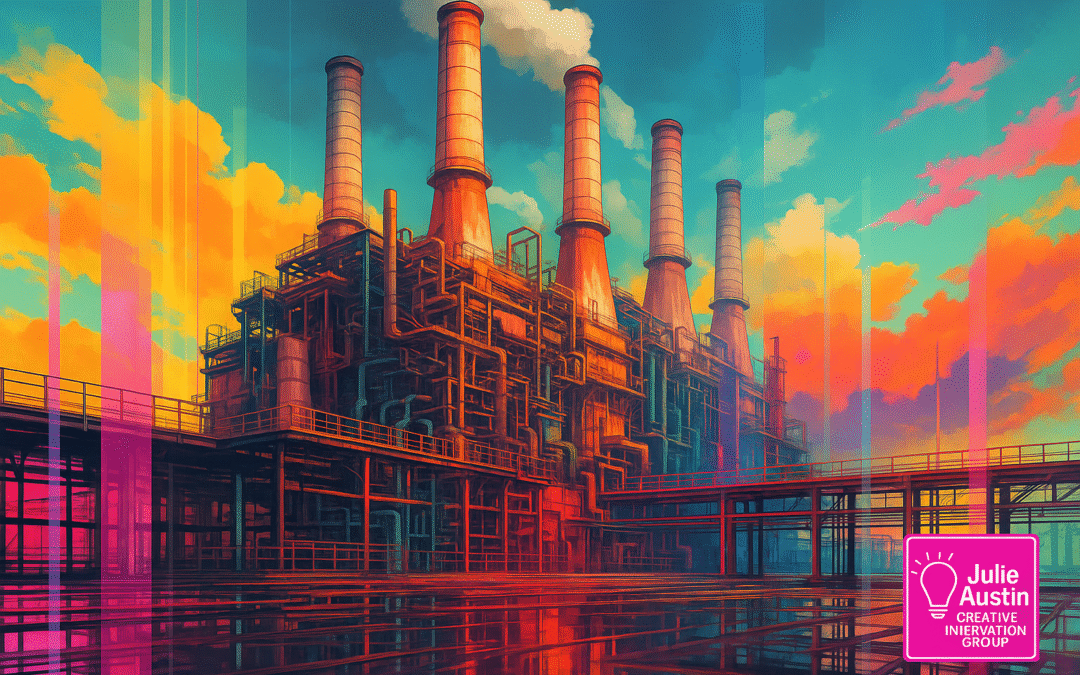Learn More About Creative Innovation Group
- Creativity & Innovation Keynote Speaker Blog
- About Julie Austin
- Keynotes: Julie Austin
- Julie Austin Testimonials
- The Whole Story of Julie’s Innovation Journey
Helpful References
- Encyclopaedia Britannica: Industrial Revolution Overview
- History.com: The Industrial Revolution
- Our World in Data: Charting Industrial Revolutions
FAQs: Innovation in the Industrial Revolution
1. What was the most revolutionary invention of the Industrial Revolution?
Many historians cite James Watt’s steam engine as the single most transformative invention because it powered factories, trains, and ships independently of water sources.
2. How did the spinning jenny impact textile production?
The spinning jenny, invented by James Hargreaves, multiplied a worker’s yarn output by up to eight times, transforming textiles from cottage industry crafts into large‑scale factory operations.
3. Why was the Bessemer process important for steel manufacturing?
Henry Bessemer’s process removed impurities from molten iron using forced air, dramatically reducing steel costs and enabling mass production of railways, bridges, and skyscrapers.
4. In what ways did the telegraph revolutionize communication?
Samuel Morse’s telegraph allowed near‑instant transmission of messages over long distances, collapsing communication times from weeks to minutes for businesses and governments.{index=8}
5. How did gas lighting transform urban life?
Gas lighting extended productive and social hours after dark, boosting factory schedules and nightlife while improving street safety in growing cities.
6. What role did sewer systems play in public health?
Innovative sewer networks installed in Victorian cities drastically reduced waterborne diseases like cholera, laying the foundation for modern sanitation and public health standards.
7. How did industrial innovations affect labor conditions?
While machines increased output, they also introduced long hours in hazardous environments, spurring the rise of labor unions and early factory regulations to protect workers.
8. Which new industries emerged from Industrial Revolution innovations?
The Industrial Revolution spawned sectors such as mass steel production, chemical manufacturing, rail transport, and electrical utilities—industries that underpin modern economies.
9. Which nations led the initial wave of industrial innovation?
Great Britain led the first wave of industrialization, followed by Germany, the United States, and Japan, each leveraging innovations to fuel rapid economic and military growth.
10. How does the Industrial Revolution influence today’s technological revolutions?
Modern revolutions—digital, biotech, AI—build on core principles of mass production, energy harnessing, and rapid communication pioneered during the first Industrial Revolution

